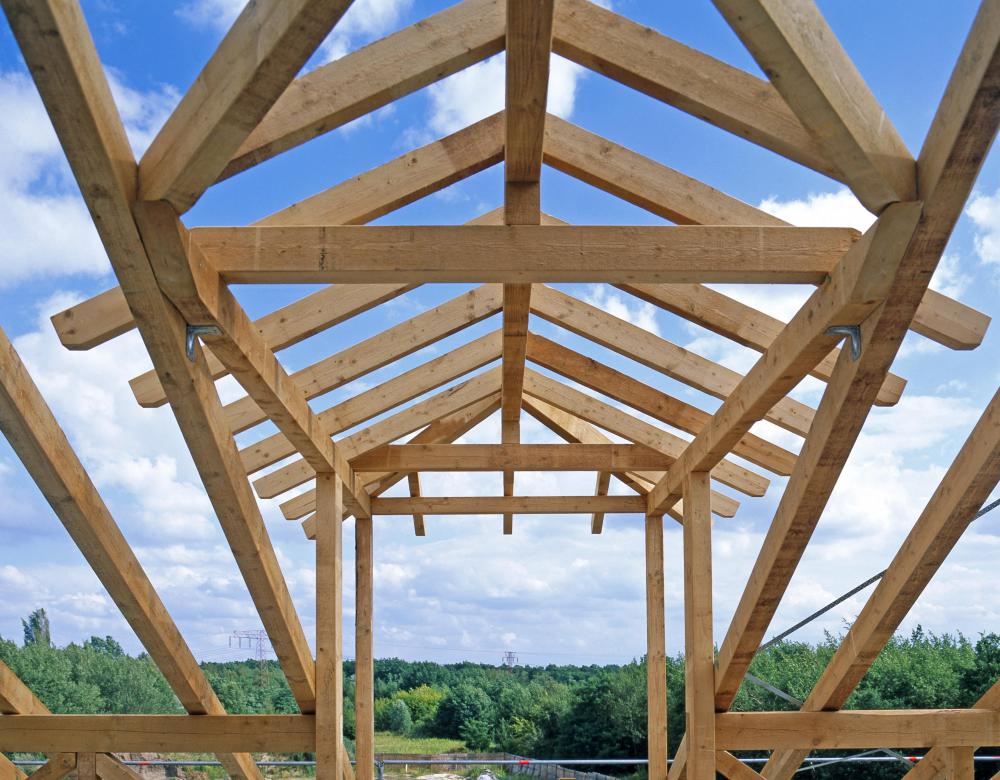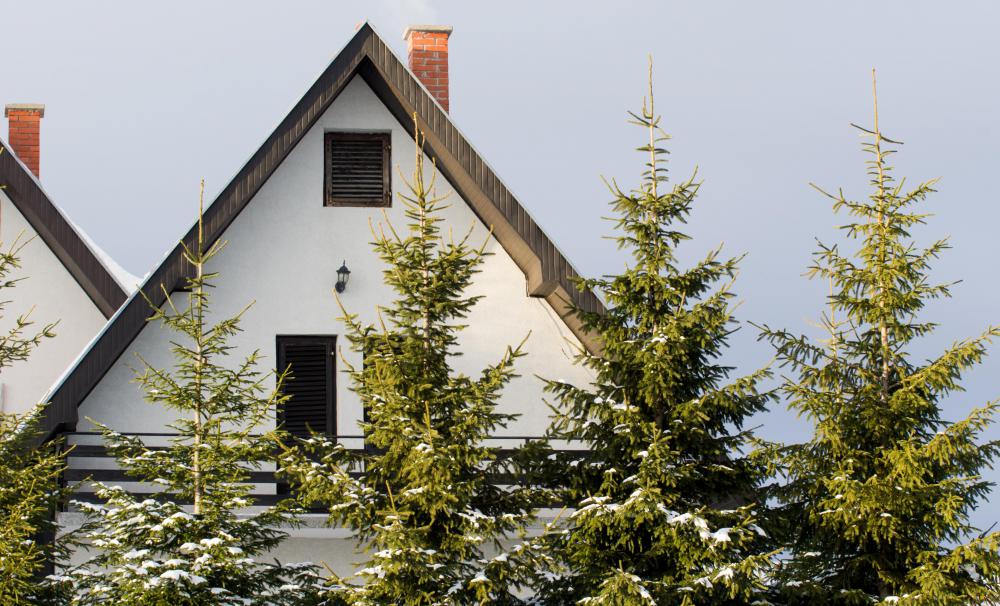At WiseGEEK, we're committed to delivering accurate, trustworthy information. Our expert-authored content is rigorously fact-checked and sourced from credible authorities. Discover how we uphold the highest standards in providing you with reliable knowledge.
How do I Choose the Best Rafter Design?
The best rafter design incorporates structural integrity and aesthetic value to the home or structure. Structural specifications are typically engineered into rafter design. Plans or blueprints provide technical details concerning the size and strength of framing members. Roof designs are an essential element in the aesthetic quality of residential and commercial architecture. The rafter design must consider load bearing factors as well as the total roof concept.
One of the most common forms of rafter design is the truss. Trusses are prefabricated, engineered roof elements that are designed to span long distances and support the roof load. The truss designer can engineer a truss to meet the performance specifications necessary to pass building codes and inspections. Different kinds of trusses can be used in the same structure to create interesting roof configurations.

Roof design is an important part of the architectural quality of a home. More expensive homes may have a more detailed and complex roof design. Simple structures place less emphasis on roof and rafter design. Trusses are typically designed using wood in residential structures and metal in commercial structures. Trusses can be fabricated in virtually any length or pitch. Less commonly used wood rafters do not have the ability to span long distances.

Common wood rafters are used mainly in smaller homes and structures such as garages and additions. Wood rafters are available in nominal wood sizes and do not need to be engineered, but load bearing specifications must be verified. Detailed drawings are usually provided for construction and inspection purposes. Installation methods may vary, and mounting hardware brackets may be required by code. Design elements such as overhangs and special cuts should be provided with the construction drawings.
A number of engineered rafter products have been developed to replace wood rafters. The engineered products span longer distances and support more weight than conventional framing lumber. They are also a cost effective solution to rafter design for larger structures where trusses can't be used. The ability to contain adequate insulation thickness has been increased using fabricated rafter design products. These type of rafter products are typically manufactured using laminated components.
The do-it-yourself homeowner can research rafter span specifications on the Internet or at a local library. Specifications for wood rafters are readily available. Details for manufactured wood trusses are typically delivered along with the trusses. Specialty engineered rafter products can be researched online and at local home improvement stores. Technical specifications are provided by the manufacturer.
AS FEATURED ON:
AS FEATURED ON:












Discuss this Article
Post your comments